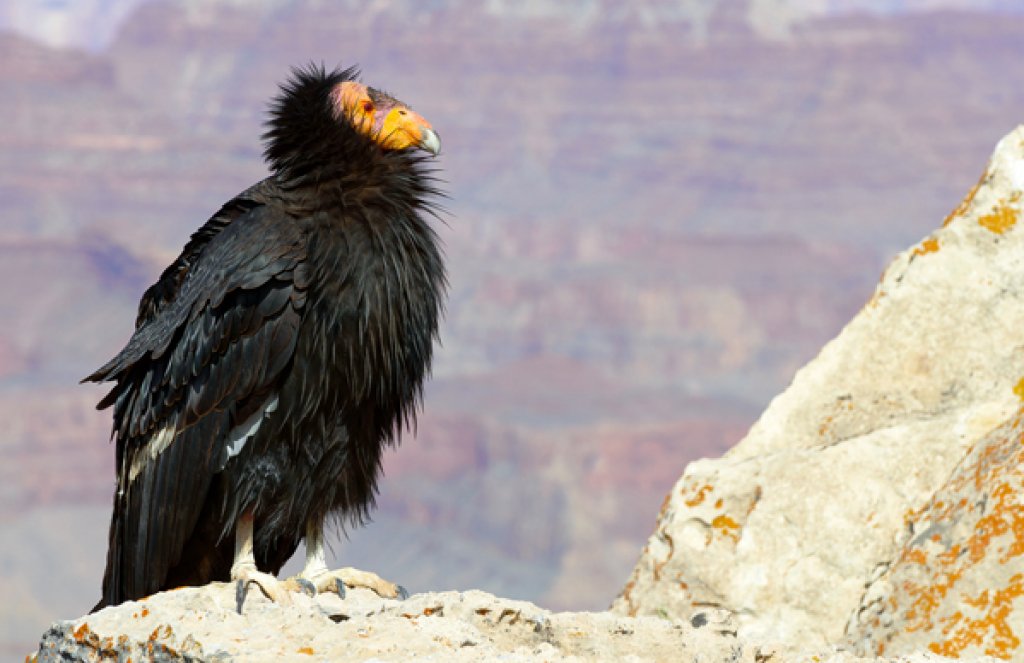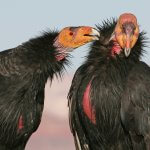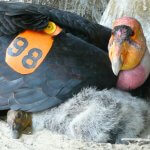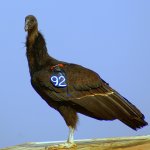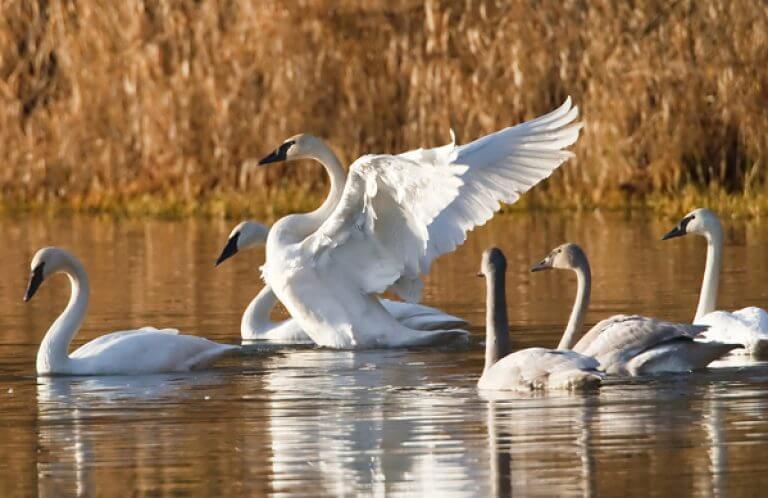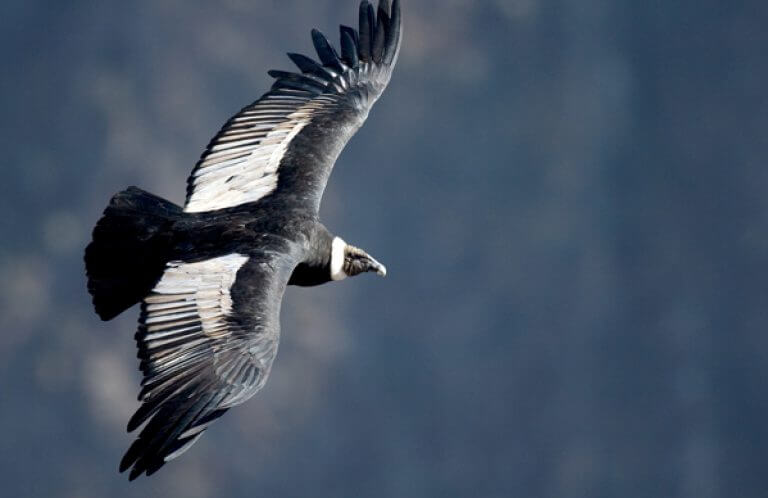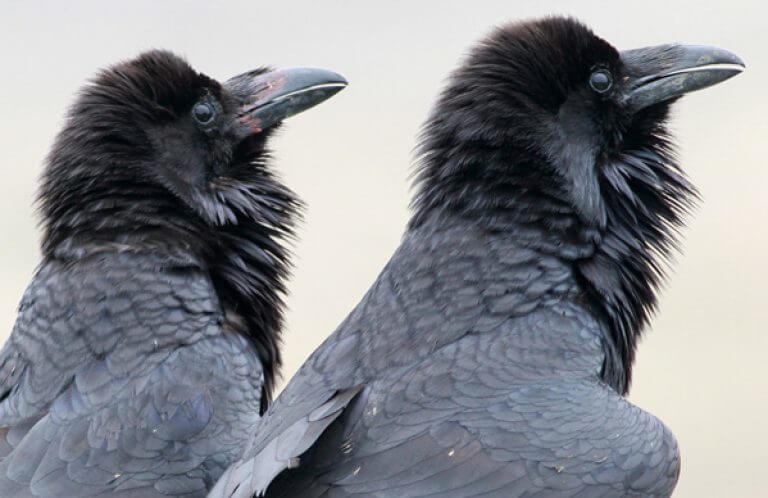About the California Condor
Often called North America's largest flying land bird, the California Condor is certainly among the continent's top “big” birds. In his field guide, David A. Sibley writes that a condor aloft “can be mistaken for a small airplane.” This bird's amazing nine-foot wingspan equals or slightly surpasses that of the American White Pelican, and the scavenging giant weighs about as much as a two-year-old toddler (23 pounds), matching the heft of the continent's largest waterfowl species, the Trumpeter Swan. California Condors are also very long-lived birds, surviving up to 60 years in the wild, which is not too far from the record held by the oldest known wild bird, a Laysan Albatross named Wisdom, which is at least 71 years old.
What could possibly satiate the appetite of a huge bird that even “out-sizes” the impressive Bald Eagle?
Surf and Turf
During the last ice age, California Condors ranged across North America. This was the age of giant mammals, and the condor fed on the carcasses of mammoths and many other now-extinct creatures. The bird's appetite for large carcasses remains: As is true of its only close cousin the Andean Condor, the California Condor wanders widely seeking carrion, in searches that can land them along the coast or inland, depending upon the population. Along California's coastline, they descend to feed on marine mammal carcasses, including those of whales, dolphins, and sea lions. Inland, carcasses of deer and other quarry left by hunters are often targeted, as are stillborn or other dead livestock.
Songs and Sounds
The California Condor lacks the vocal organ (syrinx) of songbirds, so can only produce unmelodic hisses and grunts. These vocalizations are most often heard around the condors' nest sites.
Watch a noisy condor chick here: https://www.facebook.com/USFWS/videos/2191919557489022
Breeding and Feeding
Condors begin to look for a mate when they reach sexual maturity, between ages six to seven. A male performs to attract a prospective mate by exhibiting his red head skin and puffing out his neck via air sacs. He then spreads his wings and slowly approaches the female. If the female lowers her head to accept the male, the condors may become mates for life. Other courtship behaviors include pairs soaring together over nesting areas, and mutual grooming.
There have been rare cases of same-sex condor pairs and two females bonded with one male.
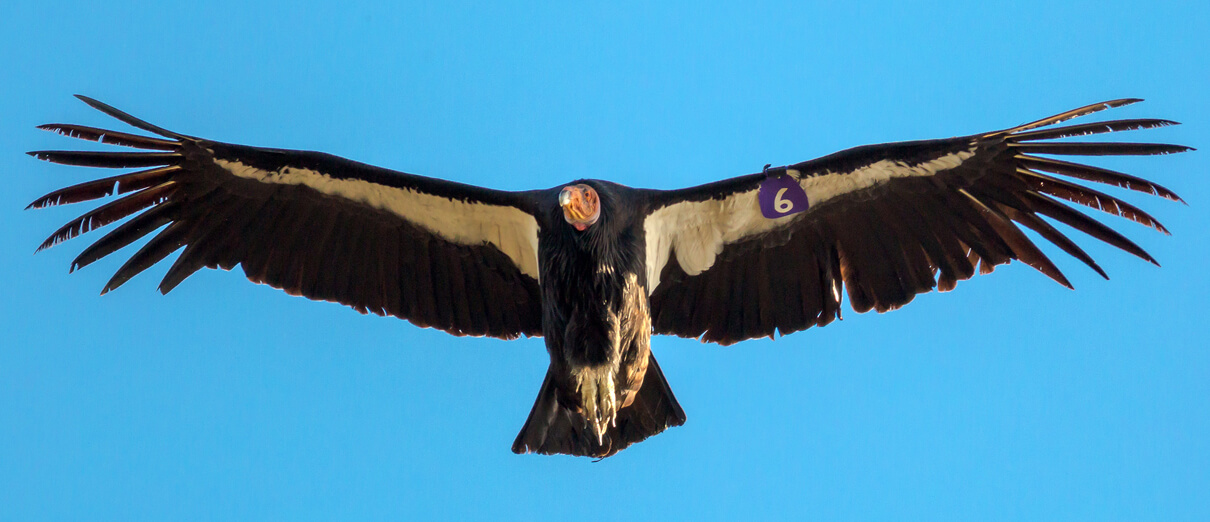
A condor pair makes a simple nest in caves or within cliff openings, especially ones with nearby roosting trees and open spaces. Sometimes, the egg is laid in a large hole in a very old tree. The “nest” is really adornment of the site where the egg is laid, using bits of detritus within reach, sometimes augmented by dried bits of regurgitated food. Sometimes eggs just sit on sand or soil. A mated female lays one whitish egg every other year. If the chick or egg is lost or removed, the female can lay another egg to replace it.
A condor egg hatches after 53 to 60 days of incubation by both parents. Chicks, covered in grayish down, hatch with their eyes open, but it is five or six months before young condors can fly. After that time, they continue to roost and forage with their parents until they are in their second year.
Walking to a Grisly Meal
Condors can range hundreds of miles a day in search of carrion. As summarized in the conservation section below, carcasses both by sea and on land can pose hidden perils for these Critically Endangered birds. The middle toe of the California Condor's foot is greatly elongated, and the hind one is only slightly developed. The talons of all the toes are straight and blunt. These adaptations, more for walking than gripping, serve this long-winged bird well as it lands near carcasses, then walks up to them to start tearing at weakened flesh.
Region and Range
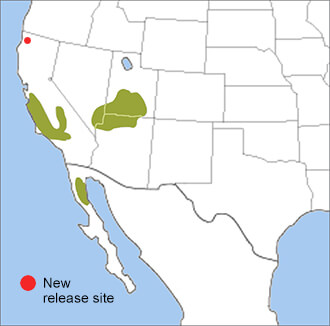
Many large mammals went extinct by the end of the Pleistocene, after which the condor's range retracted from continent-wide to parts of the West. The already-scarce bird became rarer over the years, in part due to hunting, then the threats of lead poisoning and powerline collisions.
In the late 1980s, the California Condor was declared Extinct in the Wild, after the last wild birds were captured for a captive breeding program. Decades of breeding and reintroduction efforts have slowly begun to rebuild wild populations.
There are now free-flying reintroduced populations of California Condor in California and Arizona in the United States, and in Baja California, Mexico. The newest release site is on Yurok Tribe territory including the Redwoods National Park in Northern California.
Conservation of the California Condor
From the late 1800s and into the 20th century, collectors shot flying condors and collected their eggs, which were prized for their size and rarity. By the mid-1900s, many people doubted the species would survive.
Zoologist Alden H. Miller wrote, in the preface of The California Condor, which was published in 1953: “[Humanity] will certainly fail to save the California Condor unless [it] tries to save it, and the trying is eminently worth while as anyone with even the most rudimentary appreciation of nature will agree who has actually watched wild condors living in their native mountains.”
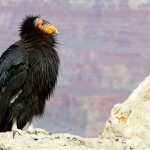
Help support ABC's conservation mission!
By 1987, poisoning and shooting had almost eliminated the California Condor in the wild. In a last-ditch effort to save the species, the 22 remaining individuals were captured for breeding programs, which continue today. These programs succeeded in bringing the California Condor back from the brink of extinction; condors are now being reintroduced into the wild each year.
Despite signs of recovery, reintroduced California Condor populations still depend upon regular human intervention for their continued survival. Lead poisoning, mostly from spent ammunition, continues to be a major threat to reintroduced populations, as are powerline collisions. Common Ravens and Golden Eagles can also pose a threat to eggs and nestlings, respectively. In addition, recent research revealed that coast-foraging condors are being contaminated with high levels of DDT and PCBs, likely due to dumped chemicals coming to shore in dead sea life.
Get Involved
Policies enacted by the U.S. Congress and federal agencies, such as the U.S. Fish and Wildlife Service, have a huge impact on America's birds. You can help shape these rules for the better by telling lawmakers to prioritize birds, bird habitat, and bird-friendly measures. To get started, visit ABC's Action Center.
Living a bird-friendly life can have an immediate impact on the birds around you. Doing so can be as easy as adding native plants to your garden, avoiding pesticides, and keeping cats indoors. To learn more, visit our Bird-Friendly Life page.
American Bird Conservancy and our Migratory Bird Joint Venture partners have improved conservation management on more than 6.4 million acres of U.S. bird habitat — an area larger than the state of Maryland — over the last ten years. This is a monumental undertaking, requiring the support of many, and you can help by making a gift today.





































